Contents
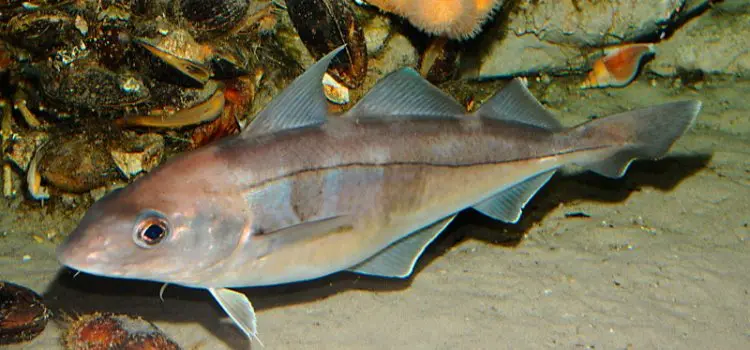
In the North Atlantic, haddock fish is found, which represents the cod family. Recently, the demand for valuable species of fish, including haddock, has increased, so the population of this fish is seriously damaged. This article explains what haddock fish looks like, what it eats, how it reproduces, etc.
Haddock fish: description

This representative does not differ in impressive size and is smaller than cod. As a rule, the average size of individuals is about 50 cm, although a specimen was caught that was slightly more than 1 meter long. The average weight of individuals is also not large and is no more than 2 kg. At the same time, the weight of the fish depends on many factors, such as the age of the fish, its sex, the nature of the habitat and the availability of food resources.
Haddock is distinguished by the presence of 3 dorsal fins and 2 anal fins. The lower jaw is shorter than the upper jaw and the upper jaw lacks palatine teeth. Between all the fins you can see the space, indicating a clear separation. The first anal fin is somewhat larger than the second. The body of the fish is light in color.
Appearance

Haddock has some resemblance to cod, as it has a small mouth, a pointed muzzle, a slender body, and a concave tail. Haddock is a typical predator that feeds on food objects of animal origin. In addition, she has two anal fins, 3 dorsal and one chin. Moreover, the first dorsal fin is much higher than that of cod. Light stripes can be seen on the sides of the body, and the whole body is covered with dark spots. In haddock, the caudal fin is distinguished by a noticeable depression, while the second and third fins are more angular.
Interesting fact! The haddock’s head and back are purplish-grey, while the flanks are a silvery-gray, with a distinct lateral line. The belly is always light. Haddock is easily recognized by the presence of black spotting present above the pectoral fin. Dark spots also occur on the sides of the body. Externally, haddock and cod are very similar.
The mouth of the haddock is smaller than that of the cod, and the muzzle is sharper, as is the more slender body. Seen from below, the muzzle of haddock is straight and slightly rounded, and the nose is wedge-shaped. The upper jaw is somewhat longer than the lower, and the body is slightly flattened laterally.
The body is covered with fairly small scales, but with a thick layer of mucus. If you look at haddock from above, you can see that this part of the body is distinguished by a dark purple-gray hue. The belly, the lower part of the sides and the head are white. The fins are dark gray tones, and numerous black spots can be seen on the lower part of the sides.
Lifestyle, behavior
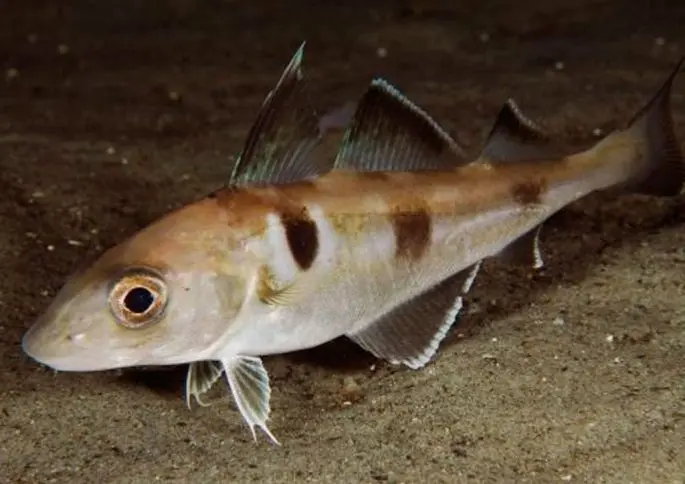
Haddock prefers to settle in deeper water areas than cod, while it practically does not appear in shallow water areas. Although haddock is a cold-blooded fish, it does not like too low temperatures. Therefore, the fish tries to leave Newfoundland, the Gulf of St. Lawrence and the limits of the territorial waters of Scotland, when the water temperature drops to a critical point.
Haddock fish prefers to be at depths up to 150 meters, adhering to the coastline at a distance of about 300 meters. Adults try to stay at a depth, while juveniles prefer the upper layers of water.
The optimal temperature regime for haddock is from 2 to 10 degrees. The main population of haddock is dispersed in cold and not very salty waters, which are typical for the American coast of the Atlantic Ocean.
How long does haddock live
Juvenile haddock lives in the coastal zone in shallow areas until they have enough strength and energy to go to open waters. Haddock females become sexually mature at the age of 1 to 4 years, while males mature somewhat earlier.
Interesting to know! In the natural environment, haddock can live for more than 10 years. It is believed that the fish is a long-liver, especially since the average life expectancy is about 15 years.
habitual habitats
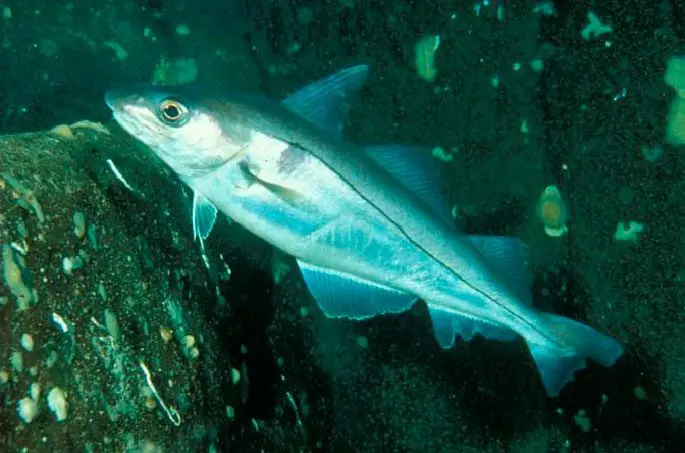
Haddock is a cold-loving fish, therefore its habitat is extended to the northern waters of the Atlantic, with the most numerous populations occurring on the American coast. In winter, haddock migrates south in large flocks, closer to New York and New Jersey, while fish have been seen within Cape Hatteras. In the southern regions, haddock fishing is carried out, but not significantly, along the Gulf of St. Lawrence, as well as along its northern coast. At the same time, haddock does not appear in the cold waters of the outer coast of Labrador, but here the haddock pleases with its catches in the summer.
Diet
The basis of the diet, especially juveniles, is made up of small invertebrates, while older and larger individuals prey on small fish of other species. After birth, the first few months the juveniles feed on zooplankton, but then they become quite voracious predators, feeding abundantly on all varieties of invertebrates.
If we give a complete list of living objects of food, then it will be very extensive and include almost all living creatures that live both in the water column and at the bottom of reservoirs. Haddock also preys on squid as well as herring, especially off the coast of Norway, and within Cape Breton, haddock preys on young eels.
Reproduction and offspring
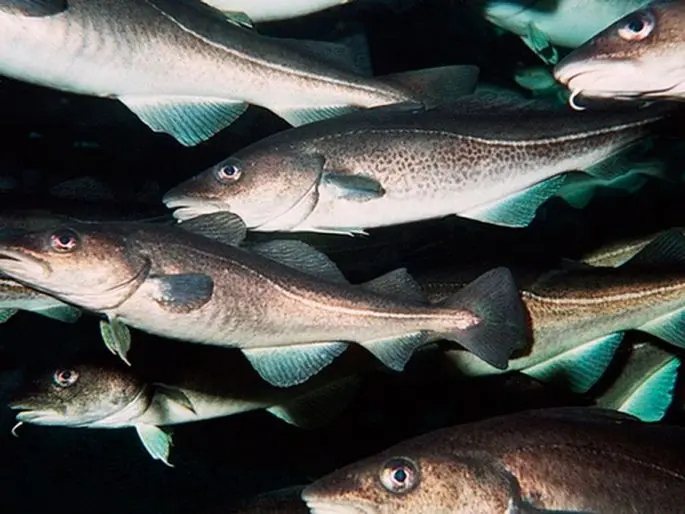
Having reached sexual maturity, which is possible at the age of about 4 years, males, as a rule, prefer to be at depth, while females, on the contrary, prefer to stay in shallow water. The spawning process is carried out at depths up to 150 meters, from January to June. At the same time, the peak of spawning occurs in March and April.
Interesting fact! As a rule, natural spawning grounds are located in the waters of central Norway, within the southwestern part of Iceland and Georges Bank. During the spawning period, the female lays up to 850 thousand eggs.
It is believed that older and larger females are able to lay almost 3 million eggs. Fertilized eggs are in the water column and migrate under the influence of the force of the current. This process continues until haddock fry emerge from the eggs. After birth, the fry spend several months almost at the surface of the water.
After that, they will sink closer to the bottom, where they will stay there almost all their lives, occasionally rising to the upper layers of the water. The mating season takes place in smaller areas almost throughout the spring.
Natural enemies
Haddock prefers to lead a flocking lifestyle, so it always moves in large groups. The fish moves quite quickly, especially in case of danger. Haddock does not like to migrate long distances. Despite such impressive speed data, haddock has a lot of natural enemies.
We are fishing for Black Sea haddock, fishing 08.05.2016/XNUMX/XNUMX
Population and species status
Haddock is a marine fish that inhabits the northern waters of the Atlantic Ocean and belongs to the cod family. Prefers to lead a benthic and flocking lifestyle. It is of great commercial importance, as it is included in the human diet. Therefore, the demand for this fish is constantly increasing, which leads to its uncontrolled catch and a decrease in numbers.
Over the past 2 years, conservation authorities have managed to do a lot of work to stop the further decline in the population. Thanks to the established strict fishing regulations, haddock numbers have been restored, but not enough to completely relax, as they are still quite vulnerable. Georgia Haddock Association 2017 assessments indicate that this fish is not subject to uncontrolled harvesting.
Fishing value
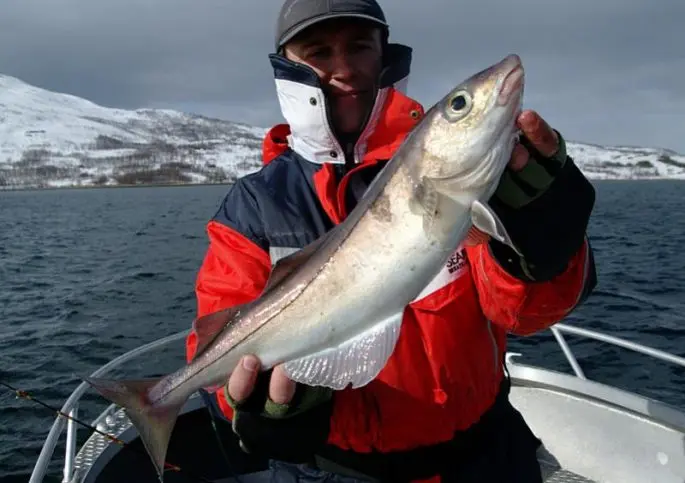
Haddock plays a very important role in human life, therefore it is of great economic importance. For the British, this is the most popular type of fish. In recent years, North America has seen a significant decline in commercial fishing, but today everything is falling into place. Haddock is an excellent food product for humans, both fresh, smoked, dried or canned, and in the form of various dishes. Haddock, compared to cod, is less useful, so it was not in such high demand before. With the expansion of the global fish trade, haddock is in huge demand as it is recognized by consumers.
The promotion of haddock on the world market was carried out due to modern technologies, or rather, after more modern technologies for filleting and packaging in packages, both fresh and frozen fish, appeared. Thanks to this, it was possible to increase the demand for haddock, which led to an increase in haddock catches.
For catching haddock, it is better to use natural bait, as it is the most effective. Haddock is perfectly caught if shrimp and clams are used as bait. Alternatively, it is permissible to use pieces of fish or pieces of squid. At the same time, fish are also caught on artificial baits, but not so actively.
Interesting to know! As a rule, fish move in numerous flocks, although at a considerable depth, so you need to choose reliable equipment for fishing. At the same time, it must be remembered that the fish have rather delicate lips, therefore, with an overbearing effort, the lips are torn, which leads to the descent of the fish.
Considering the fact that the fish prefers to be at a depth, it is better to have a boat for catching it, since it is rather problematic to catch this fish from the shore.
To catch this fish, you will have to go to the waters located in the north-east of England, as well as in the north-west of Scotland. In these areas, cod and blue whiting appear much more often than haddock, so it is likely that more cod and blue whiting will be caught than haddock.
Benefit and harm
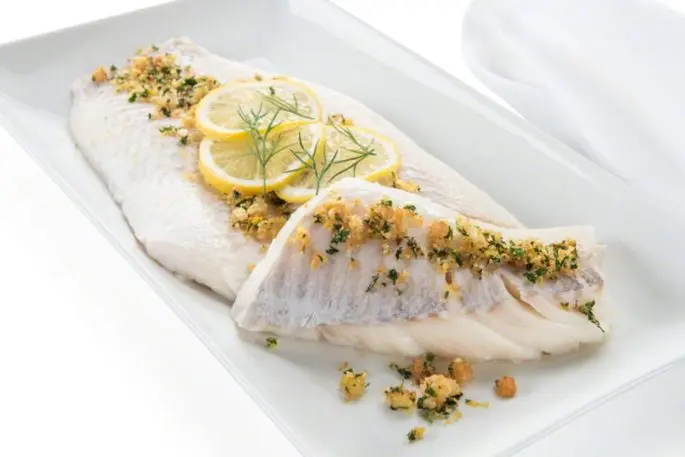
In supermarkets, you can buy haddock fresh, dried and smoked, but most likely frozen. Haddock meat has a rather delicate taste, while it is white and low-fat, which is why it is highly valued among nutritionists. The meat of this fish goes well with various interesting foods, and is also suitable for preparing various dishes. The meat also has a fairly dense texture, which is preserved with any processing technology. Even when frying, the fish retains its delicate taste, while the skin is pleasantly crunchy. By the way, the skin should not be removed. Haddock has a particularly bright and rich aroma if it is smoked or salted. It should be remembered that smoked fish is harmful, as it contains carcinogens, and problems with the digestive tract may also arise. The energy value of haddock meat is only 73 kcal per 100 grams of product.
The meat of this fish, like that of other members of the cod family, is lean, and fat accumulates in the liver. As a rule, this fat is rendered and used for medical purposes.
Haddock, like other seafood, is rich in vitamins, minerals, as well as amino acids and polyunsaturated fatty acids such as Omega-3 and others. Due to the presence of these acids, it is possible to provide the body with components that have a beneficial effect on the functioning of the central nervous system, the functioning of the eyes, the functioning of the cardiovascular system, the immune system, etc., lowering the level of cholesterol in the blood and making the body more resistant to external negative influences. At the same time, the body does not need to spend a lot of energy to isolate all the useful components, since they are in an easily accessible form in fish.
Naturally, haddock should not be consumed by those people who have an individual intolerance to seafood.
Haddock – a fish from the Atlantic









